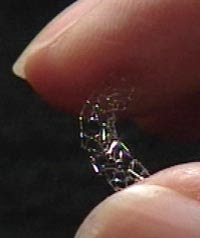Steffel, Eberli et. Al. “Drug-eluting stents-what should be improved?” Annals of Medicine. 2008; 40: 242-252
http://informahealthcare.com/doi/full/10.1080/07853890801964948
As we have seen in prior papers, although drug-eluting stents provide multiple benefits including reduced restenosis and the need for target vessel revascularization, there is also a tradeoff with a risk of stent thrombosis. The risk continues to grow after cessation of dual antiplatelet therapy, with a high morbidity and mortality, and the numbers imply that there is a higher risk in ‘real-world’ patients.
In this paper, Steffel et al. look at the problems inherent to the current generation of drug eluting stents and how they can/are being improved in second and third generation stents. Early in their paper they label three aspects of current available drug-eluting stents that need improvement: 1) Further reduction in restenosis, especially after stenting of complex lesion, 2) Avoidance of unwanted effects due to the stent polymer, and 3) reduction of the risk of stent thrombosis. With these three guidelines set out, the authors search through the different recent technological advances that are currently under investigation. In particular they examine novel antiproliferative agents, polymers, and stent designs. Some novel drugs that are currently under investigation include rapamycin analogues like zotarolimus, which is currently being used in the second generation stent Endeavor. In terms of novel polymers, researchers are trying to create polymers that could both be biocompatible and bioabsorbable. These are considered important goals in order to create a stent that can expedite re-endothelialization and limit stent thrombosis, thereby minimizing the duration of DAPT. Other aspects researchers have looked into are reservoir stents (different drug can be loaded on the luminal and adluminal (outside surface against the wall) side of the stent, coating with pro-endothelial agents (in order to enhance endothelial healing thereby reducing thrombogenicity of the stent), and coating with other anti-restenotic agents (to try to completely knock off restenosis).
Although there are many innovative novel principles that seem appealing and have demonstrated good results in initial clinical evaluation, many of these have been performed in a small number of highly selected patients and not in a large scale study. Therefore these newer therapies need further and deeper investigation before their place can be determined in Interventional Cardiology. As of now, the ideal stent appears to be one with the elution of an anti-restenotic agent with a ‘pro-healing’ (bioabsorbable/biocompatible) platform to enhance re-endothelialization. It is also hoped that one day there will different stent types for specific clinical situations. Finally there is a need for these future stents to possess potent anti-inflammatory and potent antithrombotic properties. This article shows that the future of drug eluting stents looks promising but it is still very much a young and evolving field. The ideal DES is still a ways off with many large clinical trials necessary to define it’s efficacy and potentially new limitations.


No comments:
Post a Comment